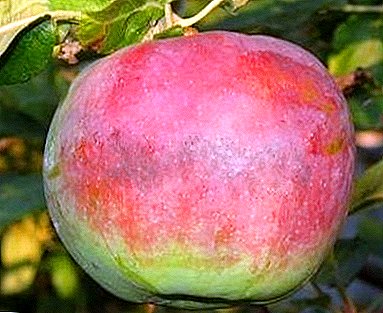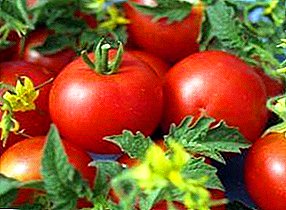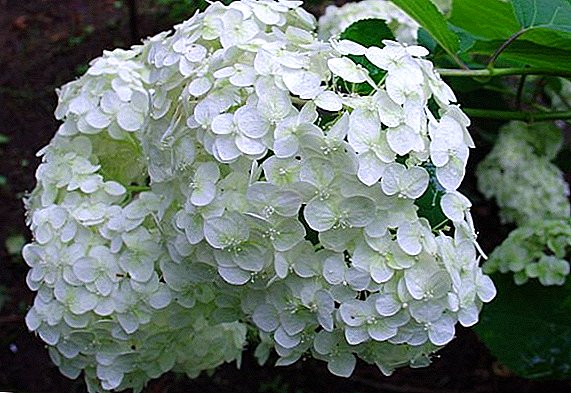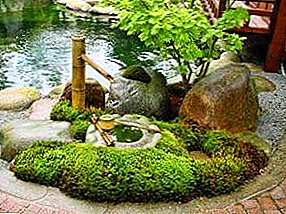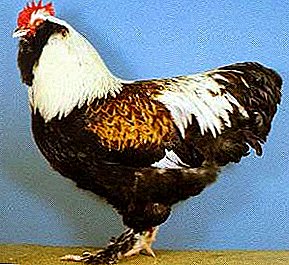
"Epipremnum" refers to the aroid family and has about thirty varieties.
This plant is a perennial evergreen vine.
General description of the plant
At home, “Epipremnum”, which is also called “Scrippsus”, can reach four and a half meters in length, adding from thirty to forty-six centimeters a year. It is characterized by the presence of brilliant heart-shaped leaves of green color, on which spots of various shapes can be located.
The leaves are evenly distributed along the stem or absently located at the bottom of the stem and are grouped on its remaining part. Long petioles are equipped with subtle longitudinal grooves.
Reference! In the sinus of leaves is usually located primary inflorescence.
It can be single or consist of a set of inflorescences. The flowers are bare and dioecious, but in room conditions they appear very rarely.
Flower "Epipremnum" has a fibrous root system. Its monopodal stems are equipped with a multitude of aerial roots, which eventually begin to woody. Under facilitating conditions, they can become a separate root system.
A photo
The photo shows the plant "Epipremnum" (Scinapsus):




Home care
In the opinion of most gardeners, the Sciendsus vine is a completely unpretentious plant, so taking care of it at home does not have any pronounced nuances.
Is it possible to keep Epipremnum at home?
 There is a popular superstition, according to which "Epipremnum" is a peremptory plant.
There is a popular superstition, according to which "Epipremnum" is a peremptory plant.
If he grows up in the house of a young girl, she will never marry, and if a married woman has acquired it, her husband will soon leave. To believe popular rumor or not is a personal matter for everyone.
Well, if you approach this issue from a scientific point of view, you should not forget that Epipremnum, like most other vines, is poisonous. Therefore, it is undesirable to keep it in homes where small children or pets live.
Pruning
Epipremnum can do without pruning, but if you want to give it a beautiful shape, perform this procedure in the spring. Shoots can be cut to half their length.
Watering
This type of liana needs moderate watering, for which distilled water at room temperature should be used. During the spring-summer period, water the Epipremnum once every four to five days, and in the winter, reduce the frequency of watering to once every seven or eight days. Water as the topsoil dries.
Important! Abundant watering and stagnant moisture contribute to rotting of the roots of the plant and the appearance of brown spots on the leaves.
Landing
 “Epipremnum” will feel best in weakly acidic soil. There are three ways to prepare a substrate for it:
“Epipremnum” will feel best in weakly acidic soil. There are three ways to prepare a substrate for it:
- One part of sod land, one part of peat land, one part of humus soil, and half of the sand;
- Three parts of leafy land, one part of sod land and one part of perlite or coarse sand;
- Two parts of peat, two parts of leafy ground, one part of pine bark and one part of turfy ground with sand or sphagnum.
Attention! For planting "Scrippsus" should take a pot with a hole at the bottom, at the bottom of which you want to put drainage.
Transfer
Important! If you notice that the leaves of your vine are drooping, it may mean that the root system has filled the entire volume of the pot.
In this case, you need to transplant the plant in a larger pot with fresh soil. Transplantation of young plants should be carried out every spring, in the grown-up "Epipremnums" can be transplanted once every two to three years.
Growing from seed
 Like most other vines, "Epipremnum" is quite difficult to grow from seeds, so this method is used very rarely.
Like most other vines, "Epipremnum" is quite difficult to grow from seeds, so this method is used very rarely.
But if you still decide to try to grow this handsome man from seeds, you will need containers with loose soil.
After sowing, water the seeds and place them in a room in which the air temperature is within twenty to twenty-five degrees. In about three weeks, you will see the first shoots, which as you grow, you can plant in separate pots.
Reproduction at home
There are such methods of reproduction "Epipremnum":
- Layering;
- Cuttings;
- The division of the escape into parts.
First way It consists in placing a pot filled with earth next to an adult plant, to which one or several shoot nodes are bent, sprinkled with soil and pressed with a pin.
For propagation of creepers by cutting you will need shoots equipped with two or three sheets. They must be rooted in peat-sand mixture and kept at a temperature of twenty-two to twenty-five degrees above zero, without neglecting regular spraying. Full rooting of cuttings will occur after a couple of weeks.
To split the escape, each part of it must be equipped with at least one piece. From his bosom will grow a new escape.
Temperature
"Epipremnum" refers to heat-loving plants. In the summer, it is desirable to keep it at a temperature of from twenty to twenty-five degrees Celsius, and in winter one should not allow temperature to drop below fifteen degrees.
Important! The plant does not like drafts and sudden changes in temperature.
Lighting
 This representative of the flora does not impose special requirements for lighting. It can be located both in the shaded depth of the room, and on the sunlit windowsill.
This representative of the flora does not impose special requirements for lighting. It can be located both in the shaded depth of the room, and on the sunlit windowsill.
However, direct sunlight is extremely undesirable for "Scinapsus", so it should be placed at a distance of fifty centimeters to two meters from the window.
Benefit and harm
 Epipremnum is one of the strongest air purifiers.
Epipremnum is one of the strongest air purifiers.
It absorbs a variety of harmful substances, including carbon monoxide.
Thanks to this plant, the air is enriched with organic and mineral compounds that have a beneficial effect on human health.
Scinspansus provides a positive energy atmosphere in the room.
People living in the house where this vine grows become less irritable and less likely to become depressed. This tropical beauty also fills the atmosphere with the energy of creation, indispensable for people of creative professions.
Important! The harm of "Epipremnum" is in its poisonousness, but you can easily avoid this harm by carefully handling the plant.
Diseases and pests
The most common problems that arise in the process of growing "Eepremnum" are attacks of aphids, scutes, ticks and mealybugs. If the leaves suddenly acquired a yellow color, it means that the plant lacks nutrition.
Important! The appearance of brown spots and black edges on the leaves indicates excessive moisture and low temperature in the room where the vine is.
Why does not bloom?
Remember that at home "Epipremnum" almost never blooms. Therefore, if you are lucky to see its bloom, you can assume that your pet has made you a real gift.
If you are not a superstitious person, feel free to start an Epipremnum in your dwelling. This unpretentious plant will saturate it with positive energy and useful substances.


